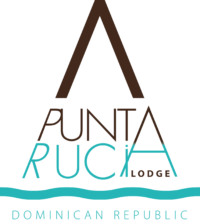Exotic Dominican Republic
Nestling between two mountain ranges, the Northwest Coast, also known as the Amber Coast, benefits from an exceptional climate as it boasts one of the lowest rainfall intensities in the Dominican Republic, making it ideal for beach and adventure lovers. The Atlantic Ocean brings to this coast a wild look with a moderate tropical climate, where the proximity of the mountains offers a striking contrast and the possibility of engaging in unique activities that make this region an even more attractive place.
The turquoise waters never go below 25 degrees Celsius, and exceptional natural sites, such as Cayo Arena with its translucent lagoon and a myriad fish, make this region a dream destination.
Several national parks or nature reserves allow you to discover protected fauna in splendid places such as Isabel de Torres (Puerto Plata), El Morro (Monta Cristi) and Los Manatíes National Park (Estero Hondo), as well as spots imbued with history.
All these parts of the Northwest Region constitute a magnificent holiday destination for those wishing to discover an authentic and wild Dominican Republic.
Its history
The island of Hispaniola was originally inhabited by Taino Indians from South America, who were fishermen, farmers and sailors. They worshipped many deities, whose numerous statuettes can still be found all over the Dominican Republic.
On discovering the Northwest Coast, Christopher Columbus said that “it was the most beautiful thing in the world.” And speaking of its inhabitants, he said, “They are a people of love. They have no envy, and they are helpful with all things. I certify to Your Highnesses that, in this world, there is no better person or land.”
In 1493, Columbus decided to found a new permanent settlement on the northwest coast of the island and thus established El Castillo and the city of La Isabela, named in honor of Queen Isabella of Castile. The town was built in a medieval style, with public buildings made of stone and about twenty residences of wood and palm.
Today, one can visit the ruins of this first city of the New World, as well as the museum built in its honor.
Amber, a prehistoric gem!
Among the riches discovered on the island is amber.
Amber is not a precious stone, but a transparent and brilliant mineral usually of a golden orange color. Amber comes from Hymenaea resin, an extinct species of tropical trees and is famous for the diversity of inlays it contains. Researchers, scientists and collectors classify amber by the three rare elements it may contain: scorpions, lizards and frogs.
The Amber Museum in Puerto Plata will allow you to discover magnificent stones such as those used at the beginning of the film Jurassic Park.
The largest amber mine in the country is located in the Cordillera Septentrional, between Santiago and Puerto Plata

